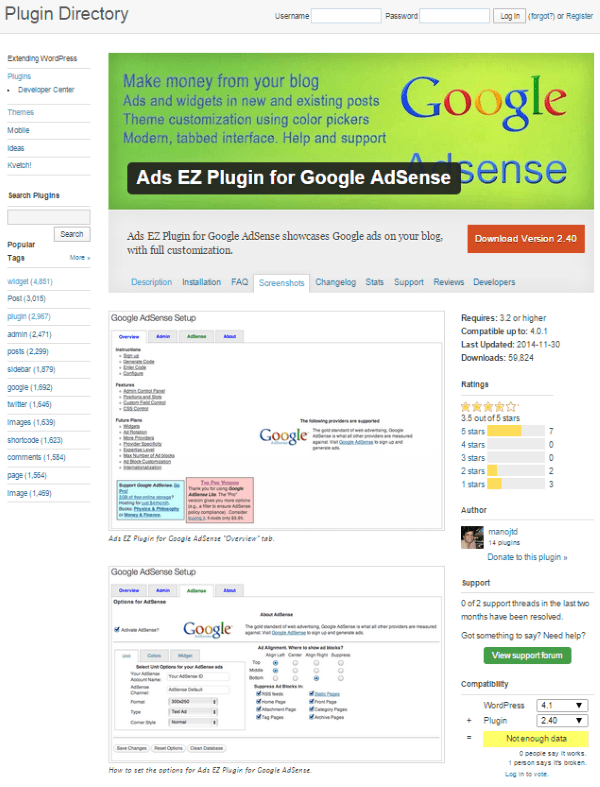Breaking News


Popular News


Monetizing WordPress with AdSense can be a game-changer for your website’s revenue potential. This comprehensive guide will walk you through setting up AdSense on your WordPress site, optimizing ad placement for higher earnings, and fine-tuning your strategies based on performance data. By implementing these insider tips, you can maximize your site’s profitability efficiently.
Contents
Monetizing WordPress with AdSense can be a powerful way to generate passive income, but the initial setup is crucial. Follow these steps to integrate AdSense seamlessly with your WordPress site:
Create a Google AdSense Account:
Install an AdSense-Compatible Plugin:
Generate Ad Units:
Add Ad Code to Your WordPress Site:
Verify and Optimize Settings:
Benefits of Using Plugins:
| Traditional Method | Using Plugins |
|---|---|
| Manual ad code insertion required | Automated ad code management |
| Potential for coding errors | Minimized risk of errors |
| Time-consuming | Quick setup and configuration |
Setting up AdSense on your WordPress site becomes straightforward when you follow these steps. By adhering to best practices, you pave the way for effectively monetizing WordPress with AdSense and maximizing your revenue potential.

When monetizing WordPress with AdSense, strategic ad placement plays a crucial role in maximizing revenue. Here are some essential tips for optimal ad placement:
Comparison of Ad Placement Options:
| Placement | Visibility | Click-Through Rate | User Experience |
|---|---|---|---|
| Above the Fold | High | High | Moderate |
| Within Content | Moderate | Very High | High |
| Sidebar Widgets | Medium | Moderate | Moderate |
| Footer | Low | Low | High |
By strategically optimizing your ad placement, you can enhance user engagement and, consequently, revenue when monetizing WordPress with AdSense. Remember, the key is to balance visibility and user experience effectively.
To achieve ongoing success while monetizing WordPress with AdSense, you need to monitor performance consistently and adjust your strategies accordingly. Here are some essential steps to help you maximize revenue:
Use Google Analytics:
Analyze AdSense Reports:
A/B Testing:
Optimize High-Performing Pages:
Ad Review Center:
Comparison of Monitoring Tools
| Tool | Main Features |
|---|---|
| Google Analytics | Detailed user insights, behavior tracking, custom reporting. |
| AdSense Reports | Ad performance metrics, revenue tracking, optimization tips. |
| A/B Testing Tools | Comparative analysis, split testing, conversion rate improvements. |
By closely monitoring AdSense performance and making data-driven adjustments, you can significantly enhance your revenue while maintaining a positive user experience.
Google AdSense is an advertising platform by Google that allows website owners to display ads on their sites and earn revenue when visitors interact with those ads. When integrated with a WordPress site, AdSense automatically serves relevant ads based on the website’s content and the user’s previous interactions. To start, you need to sign up for an AdSense account, get approval, and then place the AdSense code on your WordPress site. This can be done using various plugins or by manually adding the code to your theme files.
Effective ad placement is crucial for maximizing revenue from AdSense. Consider placing ads above the fold, within the content, and at the end of posts where they are more likely to be seen and clicked by visitors. Using heatmaps and A/B testing can help determine the most effective positions. Also, ensure that ads are not intrusive and do not disrupt the user experience, as this can lead to higher bounce rates and lower ad clicks.
To comply with AdSense policies, make sure your content is original, high-quality, and valuable to users. Avoid using copyrighted material without permission and refrain from placing ads on pages with content that violates Google’s guidelines, such as adult content, violence, or hate speech. Regularly review AdSense policy updates to stay informed of any changes. Additionally, maintain a good user experience by limiting the number of ads on your site to prevent clutter.
Tracking your AdSense performance is key to understanding how well your ads are doing and finding areas for improvement. Google provides detailed reports through the AdSense dashboard, where you can monitor metrics such as impressions, clicks, click-through rates (CTR), and earnings. Integrating Google Analytics with your WordPress site can provide more in-depth data about user behavior and how they interact with ads. Regularly analyze this data to make informed decisions about ad placements and content strategies to enhance revenue.